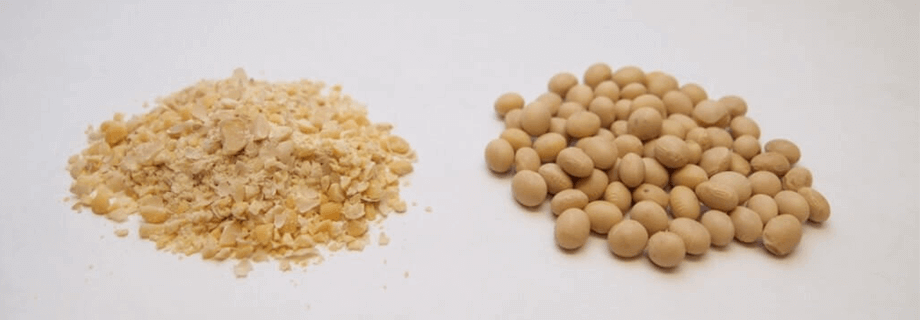Hammer Mill or Roller Mill for Soy Extrusion?

In the blog “Particle Size Reduction,” we touched based on the various types of equipment used to pre-grind materials before extrusion. The majority of projects we work on involve soybean processing and over the years, we have learned many best practices from these experiences. A typical one we see is the use of either a roller mill or hammer mill for prepping for soy extrusion.
Why grind?
The purpose of grinding is to make the extruder more efficient. While it is fully capable of extruding whole beans, the more processing that is done prior to extrusion, the less the extruder has to work and the more efficient it becomes.
As an example, imagine you are trying to cook a potato. If you were to boil the potato whole, it would take several minutes until it was cooked thoroughly. Now, if you were to dice the potato into smaller pieces and then boil, the cooking time would be reduced significantly. The heat is able to contact more surface area faster, and that same idea applies to extrusion.
Applications
Roller mills – The first thing we determine is how the soybean will be cleaned and prepared. For food and some feed applications, dehulling is required to reduce fiber content or increase protein levels. As was mentioned in “Soybean Dehulling,” the roller mill is the required choice to help crack the soybean and loosen hulls. The soybean is broken into 4-6 pieces, which is suitable for extrusion. The hulls are removed and stored for later processing.
Hammer mills– A popular application for us is full-fat soy extrusion. An important aspect in full-fat extrusion is consistency of incoming product. The roller mill is capable of reducing particle size, but as mentioned, also loosens hulls. If you were to use a roller mill and not dehull, over time these hulls will migrate to the top of surge bins. This large batch of hulls will eventually make its way to the extruder, causing surging and inconsistencies when processed. A constant flow of soybeans needs to be established again which can cause some downtime during production.
The hammer mill can be the remedy to the above scenario and is our recommendation for most situations. The hammer mill grinds everything to a consistent size, including hulls. They are more evenly distributed and do not migrate as whole hulls do, leading to consistent feed and extruder performance.
Conclusion
Each piece of equipment has its place depending on application. In our experience, the hammer mill is the preferred choice for pre-extrusion preparation unless dehulling is required. Review your application and process to see if this could be the solution for you!

